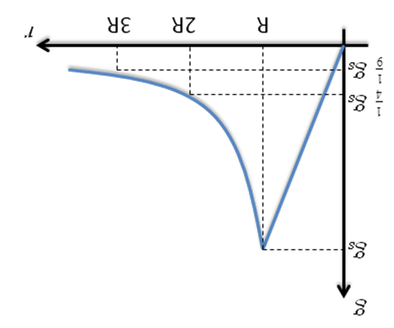What I think you mean by strength is the acceleration field at that point (a vector that you're graphing as a scalar), and (the magnitude of) it is indeed minimal inside a shell. Energy required to overcome it is the potential, and that is maximally negative and flat as Dave has correctly drawn it. You seem unable to separate the two concepts. This was pointed out in the very first reply to the OP, and 675 posts later you still haven't grasped this.
right. From the outset, Post# 2 of origin set the tone for that. that the strengths of the field is discussed, and is shown as positive on the Y axis. not negative.
Interesting that David introduced the idea of terminal velocity, acceleration to it, into the graph. zero gravity floating not only inside the empty shell but also in the ship forever. (a line parallel to the x axis).



